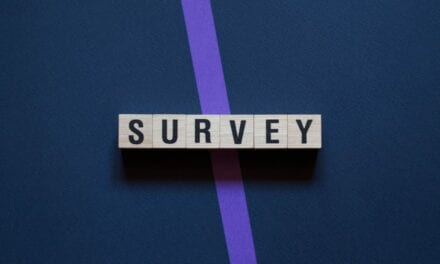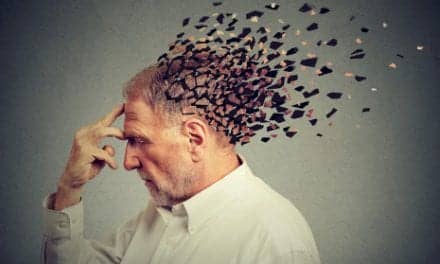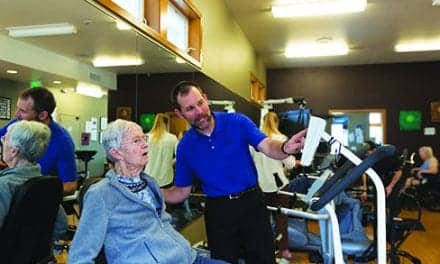In-person assessments may not fully capture at-home hand tremor fluctuations for patients with essential tremor (ET). In addition, an evaluation of hand tremor can be performed via telemedicine appointment to prescribe Cala Trio, Cala Health Inc suggests.
The company further explains its data in two abstracts it is presenting at the American Academy of Neurology (AAN) 2021 Virtual Annual Meeting, which is being held virtually April 17-22.
Both abstracts indicate that telemedicine and remote patient monitoring can improve care access and reduce patient treatment burden, according to a media release from the company, headquartered in the San Francisco area.
“COVID-19 has underscored the importance of remote health delivery and assessment strategies in providing effective care to patients with chronic diseases, especially those with movement disorders. The new data presented at AAN demonstrate how the Cala Trio therapy can also be used for home-based tracking of action tremor severity and response to therapy. This can provide insights for patients, physicians, and caregivers.”
— Kate Rosenbluth, PhD, Founder and Chief Scientific Officer of Cala Health
Abstract #1
Ruta Deshpande, Clinical Research Engineer at Cala Health, will present data from an abstract titled “Remote assessment of action tremors during COVID-19: A pooled meta-analysis of transcutaneous afferent patterned stimulation in Parkinson’s Disease and Essential Tremor” (Abstract #1981) in a poster session.
The poster characterizes the strengths of a single day (eg, in-clinic) vs repeated (eg, multi-day, at home) measurements of tremor for assessment of a patient’s tremor burden and response to tremor therapies. This analysis included in-person clinical assessments of tremor and repeated at-home motion sensor assessments.
Clinical ratings were correlated to simultaneously measured sensor assessments, suggesting motion sensors can provide a valid assessment of tremor outside the clinic. However, because tremor has considerable day-to-day variability, neither clinical assessments nor motion sensor assessments at a single time point are sufficient to capture a patient’s daily tremor burden. Motion sensors enable repeated assessments, and these multi-day assessments are shown to have higher reliability in capturing tremor burden. Moreover, repeated measurements allow for a more robust characterization of any intervention response, including response to TAPS, the release explains.
“These findings demonstrate that Cala Trio, through the power of bioelectronic medicine and repeated, at-home measurements provides consistent measures of tracking tremor severity and response to therapy in patients with movement disorders. The data also suggest that periodic, in-person assessments might not always capture daily at-home improvements and demonstrate how wearable sensors can be incorporated into remote clinical studies via telemedicine for patients with movement disorders.
“The results also suggest that repeated Cala Trio assessments of therapeutic response which are correlated to clinical gold-standard assessments can capture tremor burden, response to therapy and patient self-assessments.”
— Ruta Deshpande
Abstract #2
Salima Brillman, MD, a neurologist at and founder of the Parkinson’s Disease and Movement Disorder Center of Silicon Valley, authored the abstract “Essential tremor patients managed through in-person and telemedicine have similar experiences with prescribed non-invasive neuromodulation therapy” (Abstract #1542) in the poster session.
The abstract reports real-world evidence (RWE) analyzed to assess the effect of prescription setting on patient experience with Cala Trio. In this study, patient experience was evaluated by time from prescription to shipment to the patient; at-home therapy usage and therapy efficacy were quantified using median improvement in device-measured tremor power.
The RWE analyzed a total of 265 patients, 13 of whom were from a single telemedicine prescriber; the comparative cohorts included patients using the device for at least 30 days and with at least 10 sessions of valid accelerometer data available for analysis. Results show that both patient cohorts had similar device use patterns, with patients typically completing 1-2 sessions/day on 2.6 days/week (median; range 0-7 days/week).
Objective motion data from 12,731 sessions (613 from telemedicine cohort) showed 88% of all patients (77% telemedicine cohort) had ≥a 2-fold improvement in tremor power during their most severe sessions when tremor relief might be most needed. The study also found that 53% of all patients (31% telemedicine patients) had ≥2-fold improvement in tremor power aggregated over all sessions, the release continues.
“In this study, no differences were observed in the patient experience regardless of their Cala Trio being prescribed in-person or via telemedicine. This suggests that patient management via telemedicine is a feasible way to evaluate and treat patients with ET without sacrificing health outcomes.
“While telemedicine has been critical to ensuring that patients can receive care during the COVID-19 pandemic, its use in more routine care may help to increase access and reduce patients’ treatment burdens. These findings are especially important in patients with movement disorders who frequently require assistance from caregivers to attend in-person visits with a physician.”
— Salima Brillman, MD
The results from these abstracts suggest that the use of Cala Trio in telemedicine settings may help patients with movement disorders improve the management of their action-based tremors while reducing their treatment burden through virtual interactions with their healthcare professionals.
Cala Trio, a non-invasive personalized solution that reduces hand tremors, is currently FDA-cleared for essential tremor. In October 2020, the FDA granted Breakthrough Device Designation to Cala Trio to treat action tremors in the hands of adults with PD, and the company initiated a clinical trial in this indication in November 2020.
[Source(s): Cala Health Inc, Business Wire]
Related Content:
Action Tremors Breakthrough Device Designated by FDA
Need for Essential Tremor Treatment is Growing, Per Cala Health Data
Cala Trio Essential Tremor Therapy Safe, Effective in Real-World Conditions, Per Data





